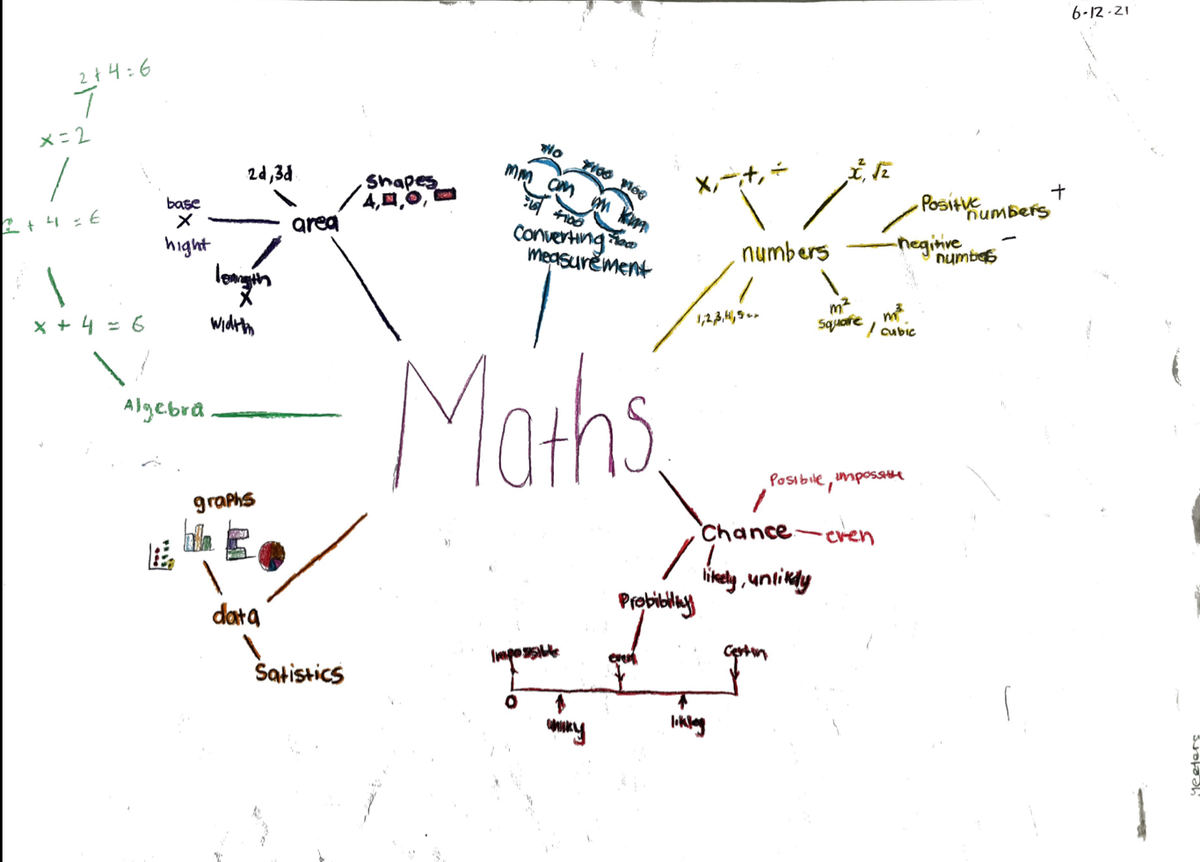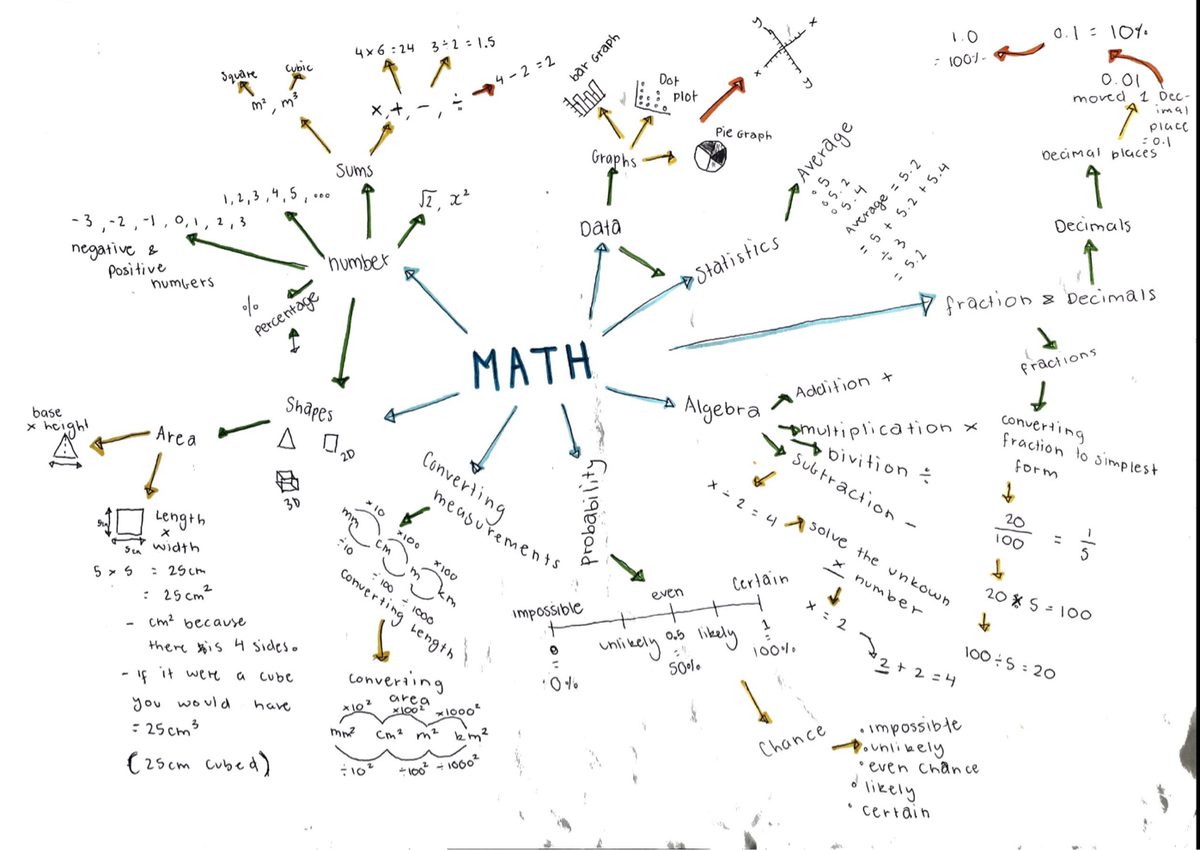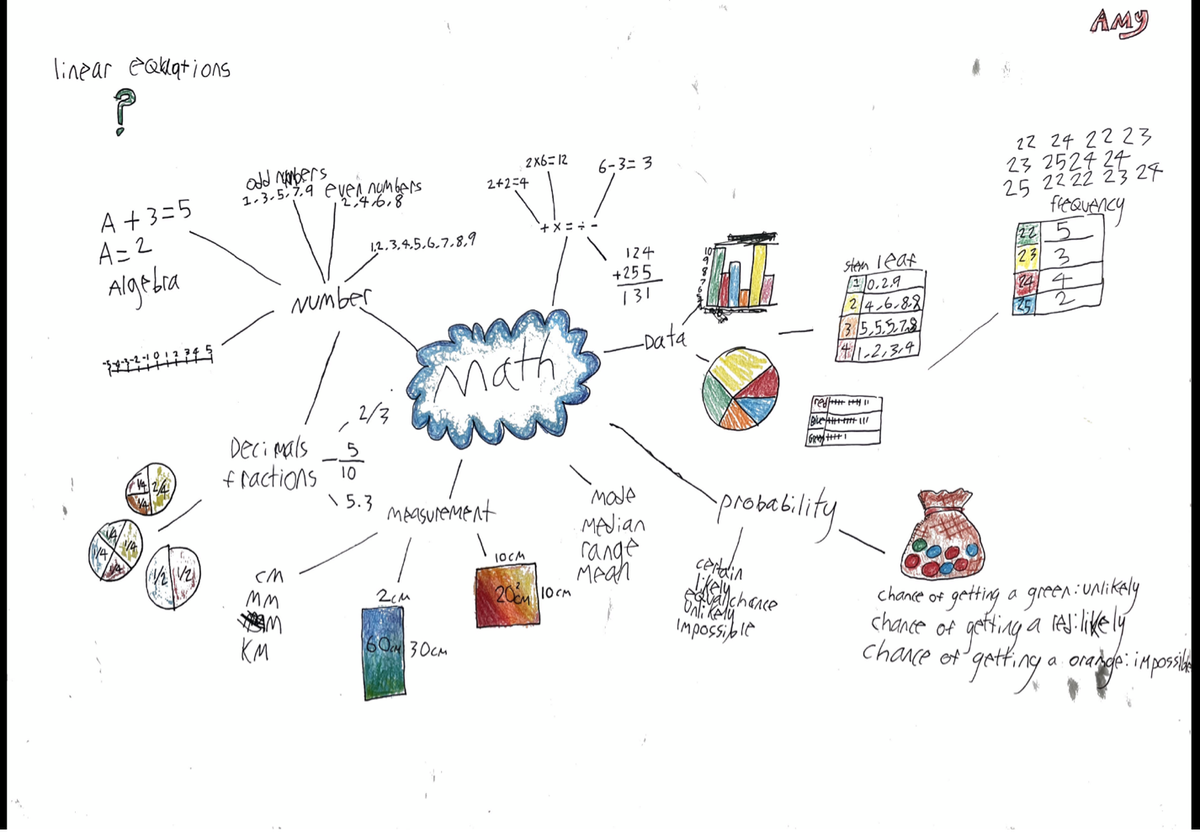Maths Matters
Key Learning Area Leader for Maths - Mr Zac Doherty

Maths Matters
Key Learning Area Leader for Maths - Mr Zac Doherty
In years 8 – 10 Mathematics the students have started off by demonstrating their prior knowledge via a mind map. Mind mapping is a powerful tool for students to be able to organize their individual thoughts and allows the teachers to see visually a student’s strengths and weaknesses.
Students are given the different strands from the Victorian Mathematics Curriculum and from here they demonstrate their knowledge however they like. In the last week of the year, students will produce another Mind map so that they can visually see their growth. The outstanding mind maps will then be kept to be shown as exemplars for years to come to help to improve the standard of work.






Following on from this we have moved into the Domain Number and Algebra, specifically, into the strand Number. All of the Maths teachers have pulled back with the standard of the content and spent extra time consolidating the foundation Mathematics skills.
We believe that if students are not confident and competent with these skills they will not be able to access the work at higher levels. We have focused on making sure students are able to use vertical addition, vertical subtraction, multiplying numbers by two and three digit numbers, dividing numbers with and without remainders and place value.
Students that have demonstrated that they are capable of the foundation skills have been extended into the 6 – 10A continuums.
In Term 1 Maths, Year 9 and 10 Students in Advanced Maths, General Maths and Numeracy will establish the goal setting routines and documenting this process using the application OneNote.
By reflecting on their misconceptions and prior knowledge independently and through teacher student conferencing, students will set and practice their personal learning goals.
They will be supported through their continuums (**continuum); relevant small focus groups and whole class focus lessons during class sessions. Initially, students will work in the domain of Number and Algebra, express numbers in scientific notation, apply index laws to numerical expressions with integer indices and carry out the four operations with rational numbers and integers. Students will be scaffolded and extended depending on personal abilities, so that students are working at point of need.
Following on from this in Term 1 and into Term 2 in the domain of Measurement and Geometry, students will investigate Pythagoras’ Theorem and its application to solving simple problems involving right angled triangles, use similarity to investigate the constancy of the sine, cosine and tangent ratios for a given angle in right-angled triangles and apply trigonometry to solve right-angled triangle problems.
Students will be scaffolded and extended depending on personal abilities, so that students are working at point of need.
Starting midway through Term 2 in the Domain of Statistics and Probability, students will identify everyday questions and issues involving at least one numerical and at least one categorical variable, and collect data directly from secondary sources, construct back-to-back stem-and-leaf plots and histograms and describe data, using terms including ‘skewed’, ‘symmetric’ and ‘bi modal’ and compare data displays using mean, median and range to describe and interpret numerical data sets in terms of location (centre) and spread.
Students will be scaffolded and extended depending on personal abilities, so that students are working at point of need.
** Continuum: A continuum is a sequence of learning that is derived from the Victorian Mathematics Curriculum. The continuum starts with Grade 4 content to scaffold students extending through to year 10A content. This allows for students to work on differentiated goals and work at a point of need.
In Term 1 Maths, Year 8 Students will establish the goal setting routines and documenting this process using the application OneNote. By reflecting on their misconceptions and prior knowledge independently and through teacher student conferencing, students will set and practice their personal learning goals. They will be supported through their continuums (**continuum); relevant small focus groups and whole class focus lessons during class sessions. Initially, students will work in the domain of Number and Algebra, carry out the four operations with rational numbers and integers, using efficient mental and written strategies and appropriate digital technologies and make estimates for these computations and use index notation with numbers to establish the index laws with positive integral indices and the zero index.
Following on from this in Term 1 and into Term 2 in the Domain of Measurement and Geometry. Students will choose appropriate units of measurement for area and volume and convert from one unit to another, find perimeters and areas of parallelograms, trapeziums, rhombuses and kites, investigate the relationship between features of circles such as circumference, area, radius and diameter, use formulas to solve problems involving determining radius, diameter, circumference and area from each other and develop the formulas for volumes of rectangular and triangular prisms and prisms in general. Use formulas to solve problems involving volume. Students will be scaffolded and extended depending on personal abilities so that students are working at point of need.
Following on midway through Term 2 in the Domain of Statistics and Probability. Students will distinguish between a population and a sample and investigate techniques for collecting data, including census, sampling and observation, explore the practicalities and implications of obtaining data through sampling using a variety of investigative processes and explore the variation of means and proportions of random samples drawn from the same population and Investigate the effect of individual data values including outliers, on the range, mean and median. Students will be scaffolded and extended depending on personal abilities so that students are working at point of need.
** Continuum: A continuum is a continuous sequence of learning that is derived from the Victorian Mathematics Curriculum. It looks at one strand and is starts with Grade 4 content to scaffold students and then continues through until Year 10 A where it finishes. This allows for students to work on differentiated goals which allows teachers to teach at point of need.
I have been impressed with the students' effort and attitude. Students have been asking lots of questions, working together and turning up to class ready to listen.
Mr Doherty
Maths Leader